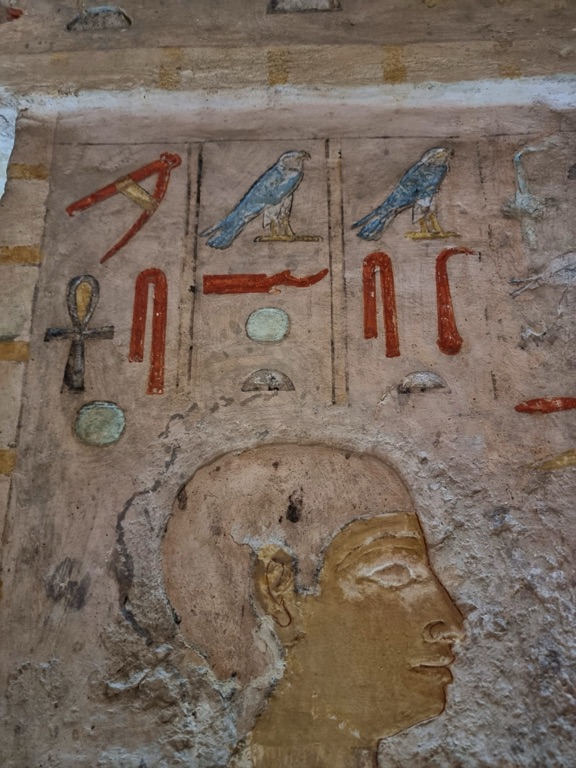Summary
Discovering the Grandeur of the Past
The Tomb of Queen Meresankh III stands as an architectural marvel, encapsulating the grandeur of ancient Egyptian royalty. Situated in the East Cemetery of the Giza Plateau, this tomb harbors the rich history and artistry of the Fourth Dynasty. Queen Meresankh III, with her tomb’s strategic location near the great pyramids, was no ordinary royalty; her resting place reflects her significance. Visitors marvel at the imposing facade and the intricate carvings within, representing scenes of daily life and highlighting the queen’s esteemed status in society.
Get your dose of History via Email
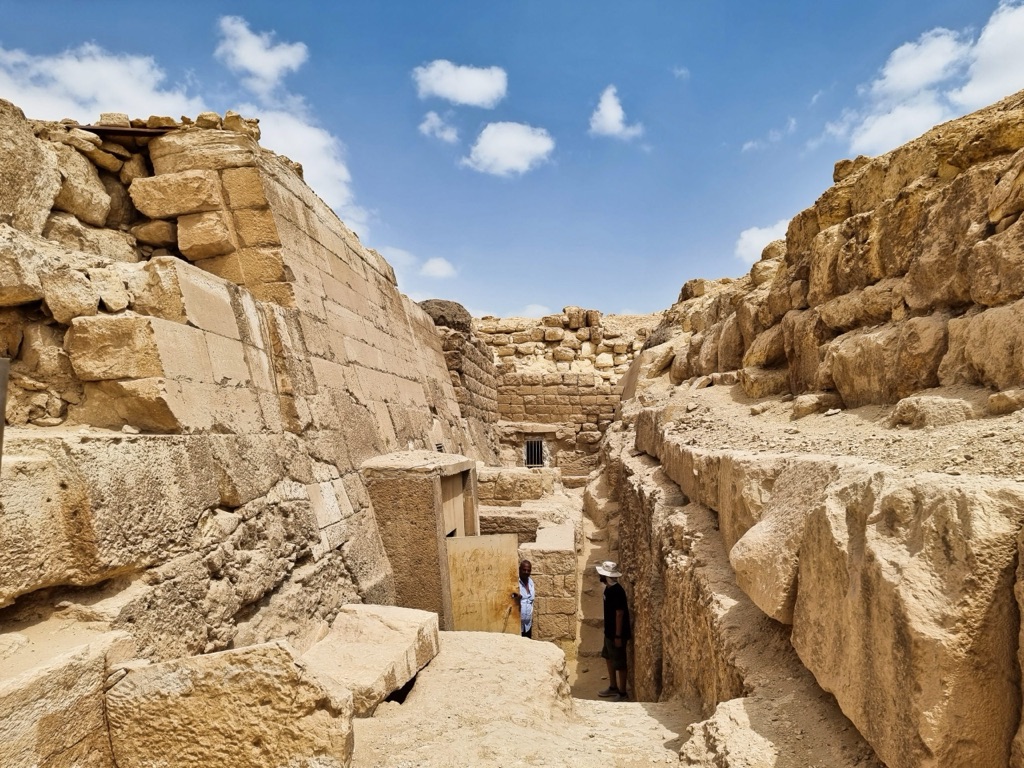
An Artistic Journey through Time
Inside the tomb, onlookers step into a realm that honors the life of Queen Meresankh III with vibrant bas-reliefs and well-preserved inscriptions that vividly narrate tales from her existence. The inscriptions portray her illustrious lineage, being the granddaughter of King Khufu, and the splendor of her era. Each chamber within the tomb showcases the exemplary craftsmanship of ancient Egyptian artists, enabling visitors to take an artistic journey through time. The lifelike depictions facilitate a deeper connection with the history of Egypt, making the experience enthralling for history enthusiasts and casual explorers alike.
Preserving History for Future Generations
Preservation efforts for the Tomb of Queen Meresankh III are significant, as the site holds valuable clues about ancient Egypt’s societal structure and cultural riches. Archaeologists and historians work tirelessly to ensure the tomb’s integrity, emphasizing the importance of Queen Meresankh III’s tomb as a key to unlocking the mysteries of the past. Exploring the site offers an educational encounter, encouraging a continued fascination with Egypt’s enchanting history, and ensuring that Queen Meresankh III’s legacy endures for generations to come.
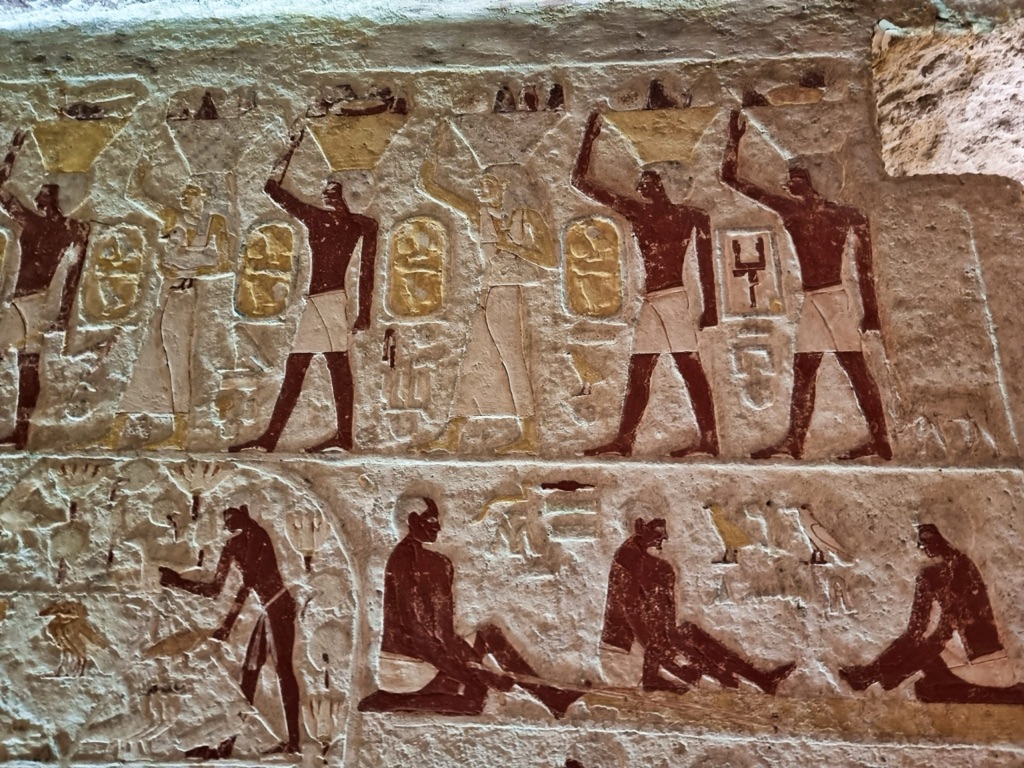
Historical Background of The Tomb of Queen Meresankh III
A Regal Resting Place in Giza
Locally nestled near the towering pyramids, the Tomb of Queen Meresankh III has stood for millennia as a tribute to ancient Egyptian royalty. Pioneering the East Cemetery, this historic site is more than just a monument. It serves as an ancestral home for Queen Meresankh III, wife of either King Khafre or King Menkaure. The very architecture of the tomb whispers stories of her remarkable lineage and prevailing influence in the Fourth Dynasty. Furthermore, the proximity to the iconic Sphinx suggests the queen’s unparalleled status amidst the pharaohs of old.
Life and Legacy Captured in Stone
The inner walls of the tomb are adorned with carvings and paintings representing the queen’s day-to-day life and her eternal journey in the afterlife. Eminent scholars and visitors alike have gazed upon these illustrations, finding a narrative that stretches across centuries. Essentially, the tomb encapsulates a vibrant cultural and historical record. Every engraving honors her relationships and accomplishments, serving as a window into the rituals and beliefs of the time. Hence, the artifacts found around and within the tomb contribute significantly to our understanding of Queen Meresankh’s era.
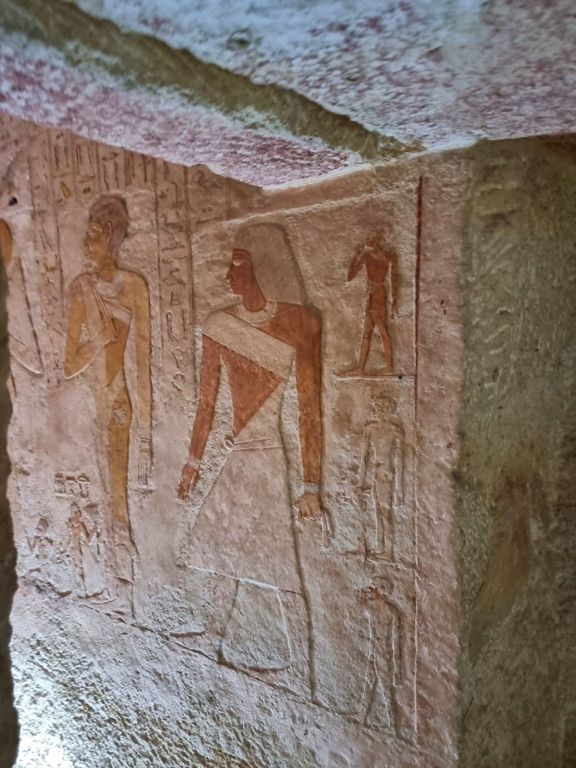
Centuries of Epitaph
Remarkably, the epitaph of Meresankh, found within the tomb, bestowed the titles “King’s Beloved Wife” and “King’s Daughter”, clearly establishing her aristocratic bearing. The inscription, still legible, underscores her heritage as the granddaughter of King Khufu, builder of the Great Pyramid. The discovery of this epitaph spurred a deeper exploration of her role in the society of ancient Egypt. Similarly, her contribution to the dynasty emerges as an intriguing mix of power and subtlety, reflected in the alignment of her tomb with the Giza complex.
The Art of Preservation and Continuity
Pivotal efforts in conservation and study have allowed Meresankh’s tomb to endure through the ages. The care taken in preserving such a monument ensures that the life and identity of the queen are not lost to time. Thus, academics and tourists continue to learn from and revere the splendor of the tomb. Tour guides and researchers alike act as stewards, intricately drawing visitors into the annals of ancient Egypt. It is through these continuous preservation practices that the legacy of Queen Meresankh III remains a beacon for historical enlightenment.
A Magnet for Modern Enthusiasts
The Tomb of Queen Meresankh III has become a fulcrum for those desiring a glimpse into a bygone society that still captivates the modern imagination. With each visitor’s pilgrimage, there is an exchange of wonder and wisdom. The ongoing interest in the site paves the way for more discoveries, as the interment place of a once-living embodiment of power and elegance. The lure of Meresankh’s tomb lies not just in the past it recounts, but also in the perpetual storytelling that shapes our understanding of human history.
The Discovery of The Tomb of Queen Meresankh III
Unearthing the Hidden Gem
In the early 1920s, the sands of Giza revealed the undisturbed tomb of Queen Meresankh III, lost to time for centuries. The serendipitous find occurred during excavations conducted by the Harvard University-Boston Museum of Fine Arts Expedition. Notably, the team, led by noted archaeologist George Reisner, discovered the tomb on April 23, 1927, etching that day into the annals of Egyptology.
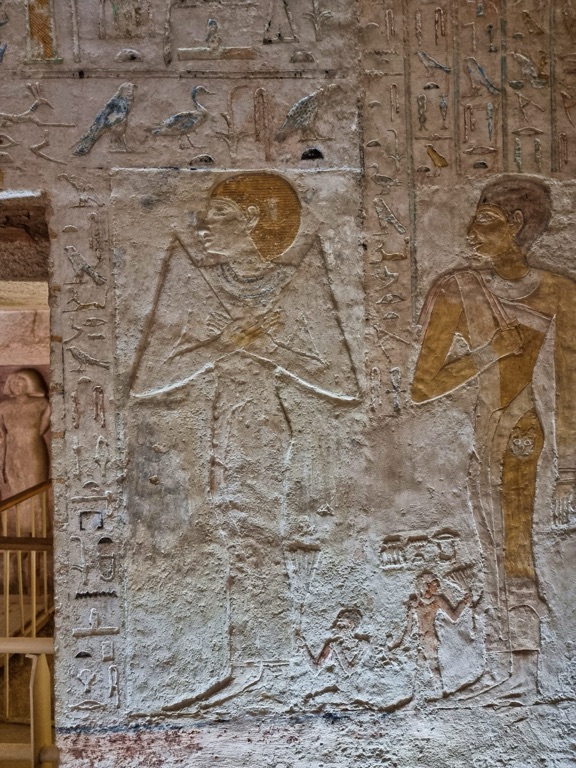
A Royal Revelation
What makes the discovery remarkable is that the tomb lay close to the queen’s mother’s mastaba, Hetepheres II. Inside, the archaeologists encountered a wealth of artifacts, including statues and the queen’s magnificent sarcophagus. Queen Meresankh III’s tomb stood out in both its exceptional state of preservation and the quality of its decor. It became evident that the tomb not only served as a final resting place but also as a narrative of her life’s opulence.
Insights into Ancient Undertakings
The excavation unveiled the meticulous methods ancient Egyptians employed in the construction of royal tombs. Intriguingly, the builders designed the tomb to reflect the queen’s elevated status. The discovery of Meresankh’s burial site brought forth insights into the rites associated with death and the afterlife beliefs of the time. It also aided in dating the nearby constructions thanks to the correlating hieroglyphs found within the queen’s burial chamber.
Spark of Global Interest
The revelation of the tomb captured the fascination of the world, prompting a resurgence of interest in ancient Egyptian civilization. It drew scholars from all over the globe, eager to decode its history. Consequently, the site turned into a bustling intersection of academic study and public intrigue, contributing rich narratives for ongoing discourse in Egyptology.
Legacy Secured in Stone
Today, the Tomb of Queen Meresankh III is a remarkable testament to the power of discovery, illuminating a storied past and fostering cultural appreciation. Not only does it enrich our understanding of ancient funerary practices, but it also offers unmatched testimony of a queen’s life and her civilization’s artistry. The discovery highlights the lasting impression that Queen Meresankh III has left on the history of humankind, securing her legacy in stone for future generations to discover and admire.
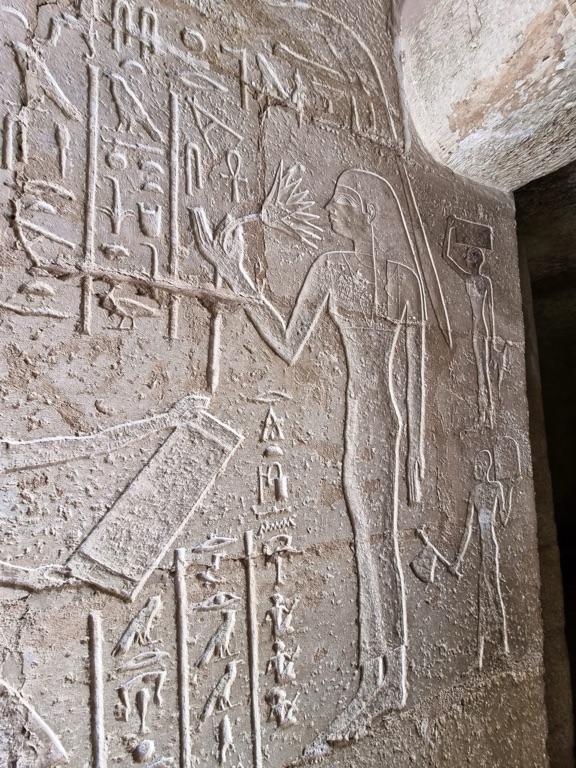
Cultural Significance, Dating methods, Theories and Interpretations
Chronicles of Cultural Impact
The Tomb of Queen Meresankh III is a linchpin in the study of ancient Egyptian culture. As a burial site for royalty, this tomb holds significant standing in the pantheon of historical monuments. It serves to provide context about the social and political structures of the time. Cultural practices such as the burial rites and the artistic expression seen in the tomb’s carvings and paintings offer a glimpse into the traditions of the day. The tomb also demonstrates the ancient Egyptians’ reverence for the afterlife and their elaborate preparations for it, which were pivotal components to their cultural identity.
Deducing Dates Through Discovery
Pinpointing the age of The Tomb of Queen Meresankh III is crucial for historical chronology. Experts have applied relative dating methods, comparing the architectural styles and artifacts found within the tomb to other known periods of ancient Egyptian history. Hieroglyphics within the tomb suggest that its construction dates to approximately the later parts of King Khufu’s reign or the early part of King Khafre’s reign. Through examining these dates, researchers have been able to link the political and familial lineage of the queen to the broader context of the Fourth Dynasty’s timeline.
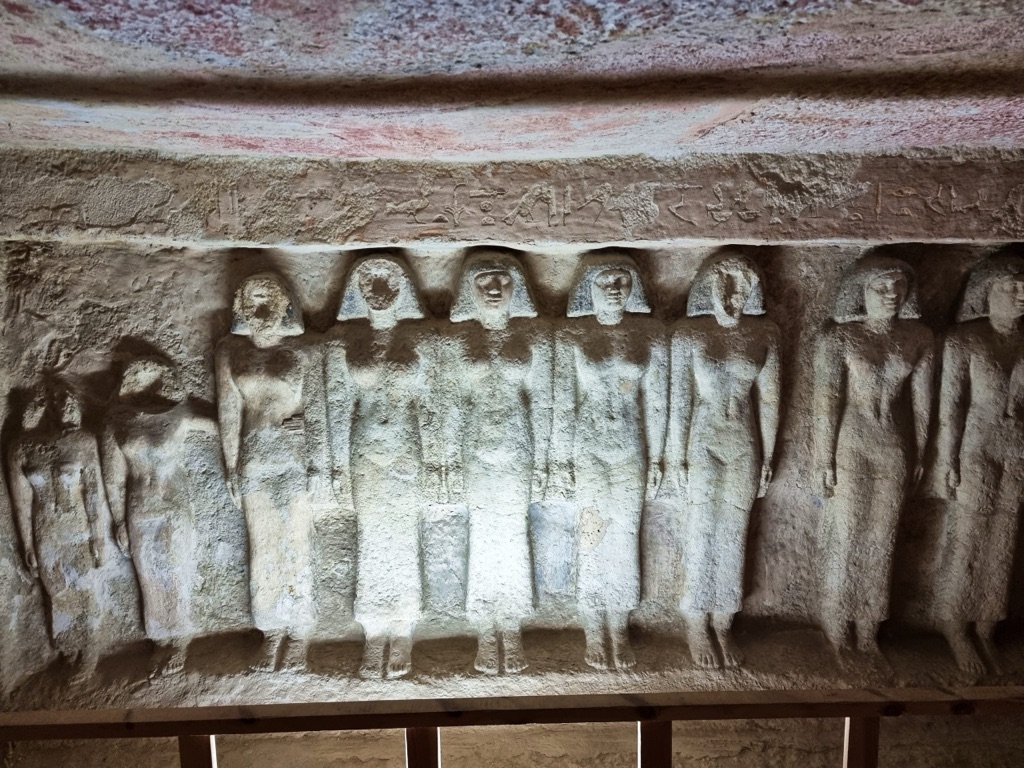
The Range of Theoretical Insights
Varied theories abound regarding the life and status of Queen Meresankh III, largely interpreted from the artifacts within her tomb. Some theorize that her position allowed her significant influence over the ruling pharaoh, possibly her husband. Others speculate about the nature of her death, with some markings potentially indicating she died young. However, a consensus remains elusive, prompting ongoing study and analysis.
Understanding Artistic Narratives
The artistic elements within the tomb are both rich in detail and symbolism. The interpretations of these artworks have led to discussions among Egyptologists about aspects of daily life and the queen’s personal interests and relationships. Such analysis aids in building a comprehensive outlook of the societal dynamics of the Fourth Dynasty, reinforcing the cultural significance of artworks in documenting historical facts.
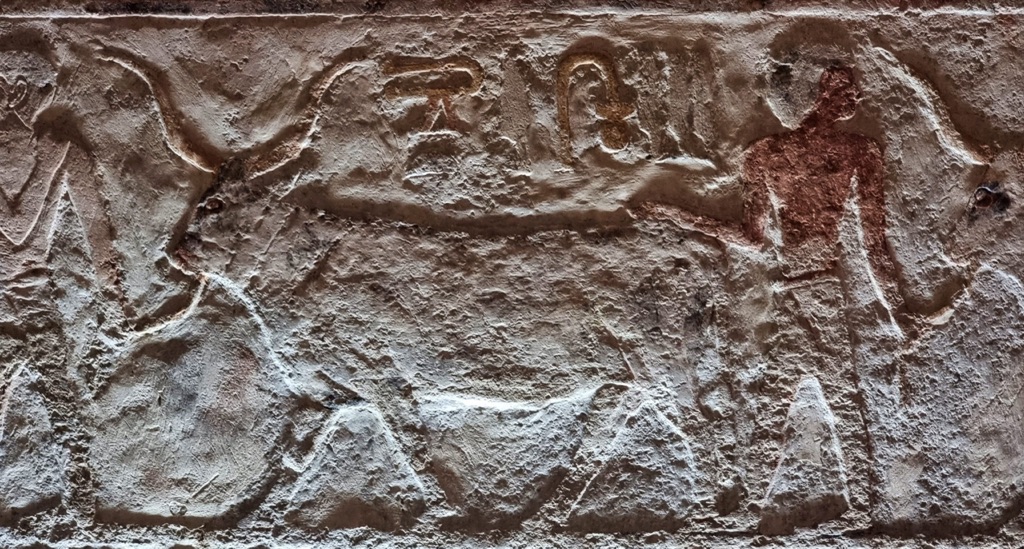
Unraveling Mysteries Through Modern Technology
Today’s scientific advancements have provided tools that enhance the understanding of ancient sites like Queen Meresankh III’s tomb. Techniques such as 3D scanning and digital reconstruction offer new ways to interpret the tomb’s original structure and the queen’s likely experiences in her lifetime. These progressive methodologies promise to refine the theories surrounding her influence and her tomb’s significance in ancient Egyptian history.
Conclusion and Sources
The Tomb of Queen Meresankh III is more than just an ancient burial site; it is a cultural artifact that offers in-depth insights into one of history’s most fascinating civilizations. Throughout the course of deciphering its hieroglyphs, examining its artistry, and analyzing its architectural form, scholars continue to enhance our understanding of ancient Egyptian life, death, and legacy. The knowledge gained from such explorations into the resting place of Queen Meresankh III not only honors her memory but also elevates our comprehension of the nuances of the past. As the tomb stands the test of time, it forever serves as a historical touchstone for academics and enthusiasts around the world, eager to connect with the rich tapestry of human history.
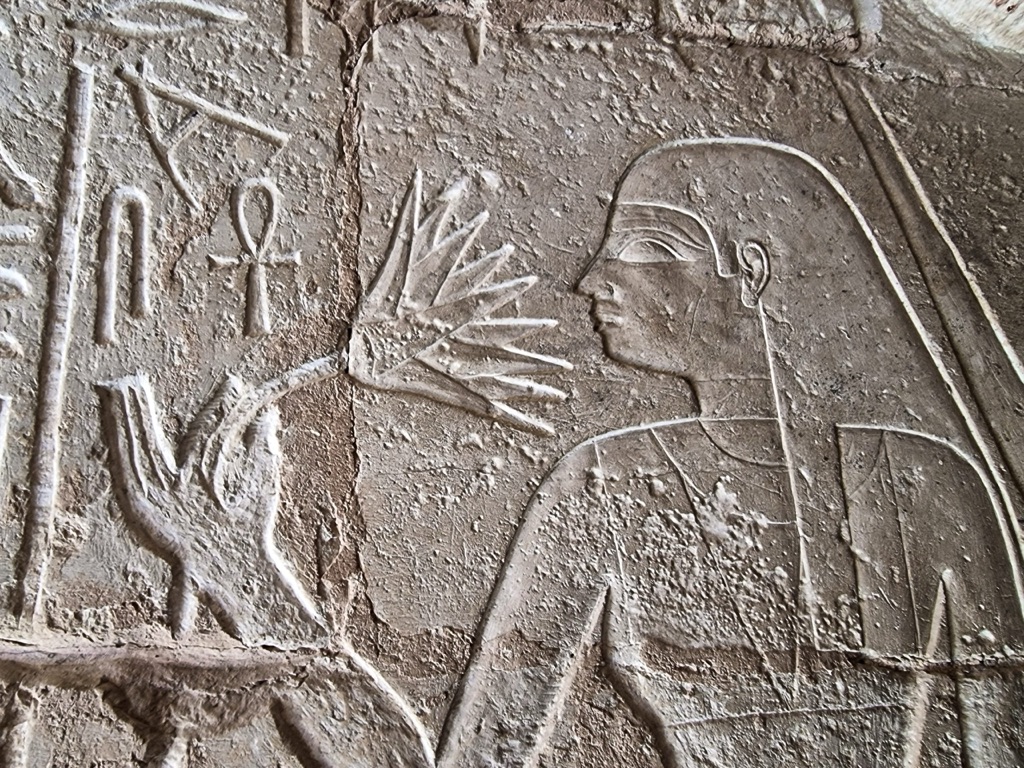
For further reading and to validate the information presented in this article, the following sources are recommended:
Or you can check any of these reputable archaeological and historical texts:
Dunn, J. (2003). ‘Queen Meresankh III – the Tomb of a Favorite wife of Khafre’, Tour Egypt Feature.
Hawass, Z. (2010). ‘Royal Tombs of the Old Kingdom’, American University in Cairo Press.
Lehner, M. (1997). ‘The Complete Pyramids: Solving the Ancient Mysteries’, Thames & Hudson.
Reeves, N. & Wilkinson, R. H. (1996). ‘The Complete Valley of the Kings: Tombs and Treasures of Egypt’s Greatest Pharaohs’, Thames & Hudson.
Strudwick, N. (2005). ‘Texts from the Pyramid Age’, Society of Biblical Literature.

